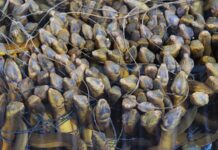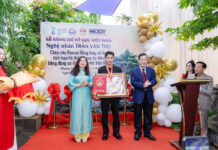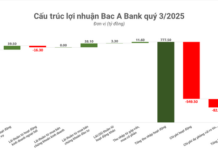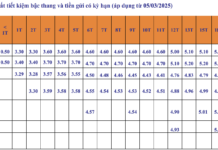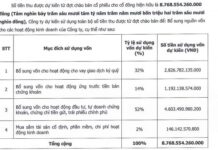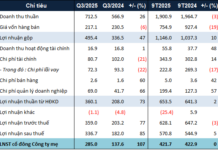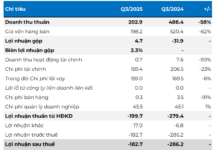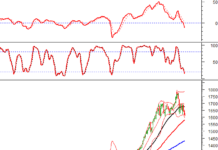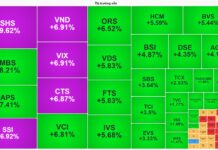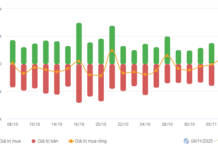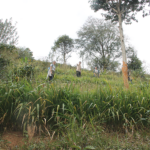Agriculture emits 116.51 million tons of CO2
At the consultation conference on the “Crop Production Emission Reduction Scheme for the period 2025-2035” on the morning of July 30, Deputy Minister of Agriculture and Environment Hoang Trung cited figures from the 2020 Greenhouse Gas Inventory – calculated by the Institute of Agricultural Environment, showing that agriculture emitted over 116.5 million tons of CO2 equivalent, with crop production accounting for about 80%.
Without comprehensive solutions, old farming practices will not only harm the environment but also face barriers in international markets as requirements for emission reduction, sustainability certification, and carbon traceability become more stringent, he pointed out.
To move towards a green, nature-friendly, and globally competitive agriculture sector, the Ministry of Agriculture and Environment has developed a draft “Crop Production Emission Reduction Scheme for 2025-2035”.
According to Deputy Minister Hoang Trung, the overall goal of the scheme is to synchronously implement solutions to promote the transformation of the crop production system towards low emissions, resilience to climate change, income improvement, and livelihood enhancement for the people, and sustainable development.
This will help enhance the competitiveness of the crop industry, ensure national food security, and gradually form an ecological and modern agriculture with strong resilience to climate change, contributing to Vietnam’s NDC (Nationally Determined Contributions) commitments.

Coffee is a key crop included in the draft Crop Production Emission Reduction Scheme. Photo: Nguyen Hue |
According to the scheme, by 2035, the crop sector aims to reduce methane emissions by 30% and total greenhouse gas emissions by at least 10% compared to the 2020 baseline, thereby contributing to the NDC through the application of appropriate technical measures for each ecological region and crop group.
In addition, the scheme aims to develop and promote the “Low Emission” label for crop products. It will implement at least 15 low-emission production models in different ecological regions, with potential for replication, and pilot at least 5 farming models capable of developing carbon credits that meet the requirements of international organizations.
The scheme also aims to develop and issue at least 5 technical packages for low-emission production applicable to 5 key crops. A crop emission database will be established and synchronized with the National Registration System.
Ms. Nguyen Thi Thu Huong, Deputy Director of the Department of Crop Production and Plant Protection (Ministry of Agriculture and Environment), said that the objects and scope of the Scheme are divided into two options, applicable nationwide.
Option 1 will be implemented for 5 crops (rice, cassava, coffee, sugarcane, and bananas).
Option 2 will focus on key crops with high potential for carbon credit emission reduction.
In reality, there have been many crop production models for emission reduction in Vietnam, but they are still experimental and fragmented. In contrast, producing agricultural products with reduced emissions, carbon traceability, and environmental certification will help access high-value markets such as the EU, Japan, and North America, with prices 10-25% higher than conventional products.
It also significantly contributes to reducing greenhouse gas emissions. It is estimated that effective implementation of the scheme’s solutions could reduce emissions by 8-11 million tons of CO2 equivalent per year, improving incomes for farmers and businesses.
Carbon credits can be exported
According to a representative of Lam Son Sugar Joint Stock Company, the company has piloted low-emission production on sugarcane on a 500-hectare area.
Since the beginning of 2025, the company has signed contracts with several international organizations to implement this initiative. As a result, Lam Son Sugar has developed a standard organic farming process to reduce emissions from sugarcane and is seeking certification from an international organization. With this certification, the company can sell carbon credits, and the associated benefits will be passed on to the linked sugarcane farmers.
The representative of Lam Son Sugar Joint Stock Company said that it took the company about a year to experiment and develop a low-emission farming model. Therefore, the issuance of standard production processes for each crop by the Ministry of Agriculture and Environment will help shorten the time and facilitate the calculation of reduced emissions.
He also emphasized the vast potential for selling carbon credits in the crop sector. While domestic carbon credit trading is relatively smooth, international transactions still face challenges due to Vietnam’s lack of a clear mechanism for carbon credit exports.
Therefore, there is a need to soon establish a legal framework for carbon credit exports. This will be a new and promising area for Vietnamese agriculture as global countries and businesses increasingly demand carbon credits to fulfill their emission reduction commitments.
At the forum, experts and businesses suggested not limiting the scope of crops and application areas. Along with this, the MRV (Measurement, Reporting, and Verification) system must be globally recognized to quantify emissions and commercialize carbon credits in the international market.
Ensuring clear economic benefits for farmers is the key to promoting low-emission production. When farmers witness the benefits of reduced costs, increased selling prices, and additional income from carbon credits, they will actively participate.
Tam An
The Urban Pig Sty: A Proposal for Multi-Story Indoor Pig Farming
The Ministry of Agriculture and Environment has proposed a pilot project to the Prime Minister, suggesting a new model for pig farming in Vietnam: multi-story pig farms. This innovative approach aims to revolutionize the country’s agricultural landscape, offering a sustainable and modern solution to the industry’s challenges. With this proposal, the ministry envisions a future where pig farming thrives, embracing modernization while ensuring the industry’s longevity.
Carbon Credit Sales: Empowering Farmers to Prosper
Ecological agriculture and circular farming are not just methods of cultivation, but a philosophy that strives for long-term sustainability for both people and the planet. With a shared goal of achieving Net Zero by 2050, Vietnam’s agricultural sector is undergoing a transformation towards ecological farming practices to protect natural resources and community health, paving the way for a green, clean, and resilient future.
Revolutionizing the Agri-Food Industry: Targeting a $100 Billion Export Revenue for Vietnam’s Agricultural, Forestry, and Aquatic Products
Prime Minister Pham Minh Chinh has set an ambitious goal for Vietnam’s agricultural sector: to achieve $100 billion in exports of agricultural, forestry, and aquatic products in the coming years. To realize this vision, he has identified nine key areas that need attention and reform. These include institutional and policy frameworks, planning and infrastructure, access to capital and insurance, market development, scientific and technological advancements, skilled workforce training, rural cultural development, and, most importantly, understanding and addressing the needs and aspirations of Vietnam’s farmers.
The Green Revolution: 9 Key Issues for Developing an Eco-Friendly Agriculture, a Modern Rural Economy, and a Cultured Farmer
“On December 31st, Prime Minister Pham Minh Chinh chaired a conference with farmers, themed ‘Igniting the Aspiration for Prosperity to Build a Prosperous and Happy Nation; Confidently Stepping into the New Era.’ The Prime Minister emphasized the need to review and refine policies to accelerate and boost the goal of developing ecological agriculture, modern rural areas, and cultured farmers.”

